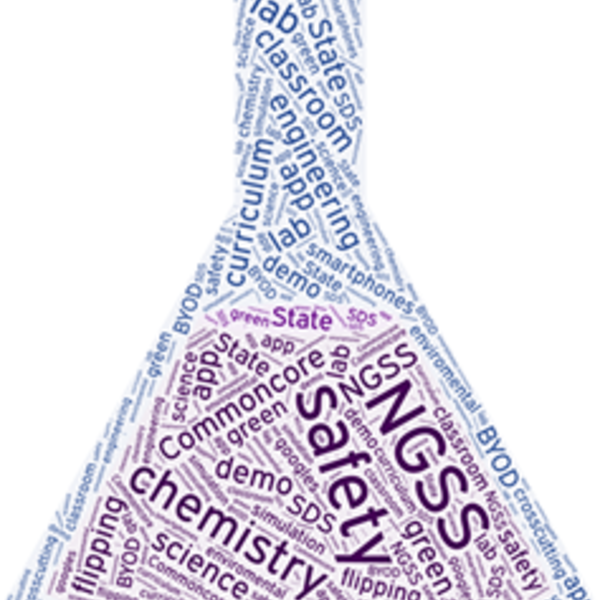AACT Member-Only Content
You have to be an AACT member to access this content, but good news: anyone can join!
Chemistry Solutions
As I prepare myself for my 22nd year of teaching chemistry, I look back to the fall of 1995, when I began my career. In the summer months prior to my first teaching assignment, I was given the course text book and the accompanying teacher resource materials in order to prepare myself — and that was it. To make the start of my career even more “exciting,” I was part of a trio of new chemistry teachers, who all shared the same office and classrooms. We really didn’t have anyone but ourselves to help us get through the year. This was before Google, online message boards, and “sharing.” We were truly on our own.
We spent a lot of late nights developing our own lessons, tests, and worksheets. We had to follow the chosen text book and materials, which provided a good, basic start. But we were not sure if we were presenting the chemistry content in the most effective way for our students to learn.
The three of us were often the last ones to leave the school each day as we spent many hours planning and setting up the next day’s lab activities. Most of these labs we had never tried before, so the first time the students did the lab, it was our first time as well. If something did not go as planned, we often had no idea why. We also learned from our first-time experiences. For example, we underestimated the creativity and unpredictability of the teenage brain when it came to using chemicals, creating bubbles or exothermic reactions — and especially, behaving around open flames. Luckily, there were no major injuries — but there was an unplanned visit from the local fire department!
 As tiring and stressful as that first year was, the most valuable experience I got out of it was working with my fellow rookie teachers. We shared many ideas and tips, while learning from each other’s mistakes. This was real, unplanned collaboration. Without them, I would have never survived my first year.
As tiring and stressful as that first year was, the most valuable experience I got out of it was working with my fellow rookie teachers. We shared many ideas and tips, while learning from each other’s mistakes. This was real, unplanned collaboration. Without them, I would have never survived my first year.
Now, two decades later, the role of a chemistry teacher is much more complicated. We as educators have to incorporate standards like NGSS, while following state-mandated curriculums. Technologies that were practically non-existent in the ‘90s and earlier are completely integrated in our everyday classroom activities. Lab safety has now become a top priority (and rightfully so) in teaching chemistry. And we are constantly increasing our focus on real-world issues, such as green chemistry and environmental concerns. Each teacher seems to have a growing list of responsibilities, which can be especially difficult for new teachers!
Teaching resources at your fingertips
Given all that is expected from new teachers, it’s fortunate that there is a wealth of online resources available to help make teaching and related tasks more manageable. These include online forums where teachers can connect with other professionals.
Here at the American Association of Chemistry Teachers (AACT), we also have a website full of useful information for all teachers of chemistry. As AACT’s incoming president, I’m proud of the fact that our organization has invested significant time and effort into creating materials to meet teachers’ needs. Our classroom resource library is full of teacher-tested lesson plans, and is constantly growing. The multimedia library is a great place to start planning for technology integration, including the newest simulation focused on bonding. Our webinar archive and Chemistry Solutions periodical give teachers some great advice on topics such as lab safety, green chemistry, and even 15-minute lab clean-ups.

As you plan your lab activities for the year, be sure to thoroughly reflect on safety considerations and consider these tips for guiding students in their lab report writing. Chemistry lessons are constantly evolving to include STEM practices and real-world connections. If you are looking for new, exciting material, be sure to read about the Ford project and the 19 classroom resources that were developed through the AACT-Ford partnership.
On a final note, I am excited to begin my year as President of AACT. We have been growing and improving by leaps and bounds, and I am looking forward to introducing new ideas for our members. I am very interested in expanding and promoting our digital resources, especially for our newer teachers who are looking for ideas and support to be successful in the classroom.
If you are a veteran teacher with new colleagues (or even college interns) in your department, introduce them to the benefits of AACT. And for all teachers young and old, feel free to leave a comment, or better yet, share your activities and experiences with us!
Best wishes for the new school year!
Scott Hawkins
AACT President, 2016-2017
